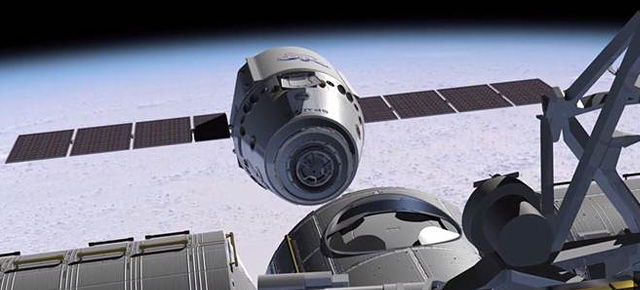Funding Cut Would Delay Private Space Taxis, NASA Deputy Chief Says

COLORADO SPRINGS, Colo. — NASA remains committed to preserving competition in its commercial crew initiative even if Congress does not provide the full $830 million requested for the effort in 2012, a senior agency official said.
Speaking with reporters Monday (April 16) here at the 28th National Space Symposium, NASA Deputy Administrator Lori Garver said the agency likely would stretch out rather than change its approach to the Commercial Crew Program should it not be fully funded next year. Stretching out the program would extend the time during which NASA is dependent on Russia for crew transport to and from the International Space Station, she said.
A number of lawmakers, most recently Sen. Barbara Mikulski (D-Md.), who chairs the Senate Appropriations subcommittee that funds NASA, have expressed skepticism that the agency truly needs as much as it has requested for the Commercial Crew Program. Some have suggested that NASA could save money by reducing the field of competitors for the job, either by merging elements of the various commercial crew proposals or by simply selecting a winner and making the contract award this year.
On Tuesday (April 17), Mikulski introduced a NASA spending bill that would provide $525 million for commercial crew for 2013 — about $300 million less than the agency is seeking. [Vote Now! The Best Spaceships of All Time]
Keeping competition alive
NASA hopes to help bring at least two crew taxi providers into service, and Garver said this is the surest way to keep program costs down. With two providers, she said, NASA expects to spend less than the roughly $60 million it currently pays the Russian space agency, Roscosmos, for each seat aboard a space station-bound Soyuz capsule.
Congress in 2012 granted $406 million for the Commercial Crew Program, less than half of the $850 million requested by NASA. As a result, NASA plans to use Space Act Agreements rather than fixed-priced contracts to fund the next phase of the program, which is expected to yield at least two vehicles capable of ferrying astronauts to and from the space station. Space Act Agreements provide flexibility by enabling NASA to make payments when certain programmatic milestones are reached.
Breaking space news, the latest updates on rocket launches, skywatching events and more!
NASA has Space Act Agreements with four aspiring commercial crew providers: Boeing Space Exploration of Houston, Blue Origin of Seattle, Sierra Nevada Corp. of Sparks, Nev., and Space Exploration Technologies Corp. (SpaceX) of Hawthorne, Calif. All but SpaceX intend to launch their vehicles aboard Atlas 5 rockets provided by Denver-based United Launch Alliance (ULA), a Boeing-Lockheed joint venture.
The next phase of the program is expected to get under way later this year.
Garver said the Commercial Crew Program, along with a related effort to develop commercial cargo delivery services to the space station, is critical to bringing competition to the government launch services business. Currently ULA launches the vast majority of U.S. government payloads aboard its Delta 4 and Atlas 5 rockets, whose prices have risen steeply in recent years due in part to rising propulsion costs related to the retirement of the space shuttle last summer.
Launch costs keep rising
NASA today spends about a third of its science budget on launch services, Garver said. While lauding ULA for providing highly reliable launch services, she said competition is the key to bringing prices down for the government and for making U.S. industry competitive again in the international commercial launch market.
NASA is committed to operate the space station through 2020, but Garver said the agency wants to continue flying the orbital outpost beyond. That makes it even more important to keep costs down.
"We’ve been clear that we believe competition is the best way to achieve this," she said.
NASA has legislative authority to buy crew transportation services from Russia through the middle of 2016, which is about when the commercial crew taxis are expected to begin operating. Should the commercial crew vehicles be delayed, NASA will require legislative relief from a nonproliferation law to contract with Roscosmos for more Soyuz flights. Garver said a contract with Roscosmos must be signed three years ahead of when the first Soyuz flight is needed.
This article was provided by Space News, dedicated to covering all aspects of the space industry.
Warren was the former Editor-in-Chief for SpaceNews from 2008-2016 where he set editorial direction for weekly newspaper and website covering global space industry. He also led editorial team including reporters in Washington, Paris, San Francisco, Bangalore, Moscow and Tokyo; and freelance photographers and graphic designers. He's currently a senior strategist for BryceTech out of Alexandria, VA.


